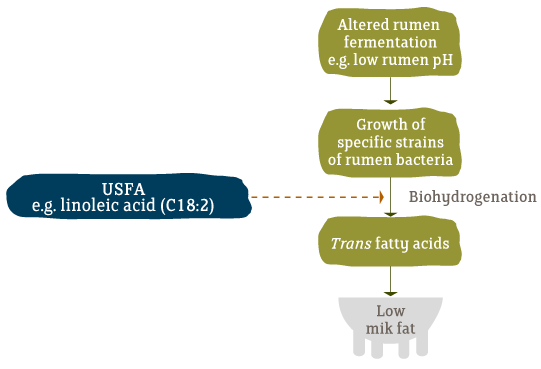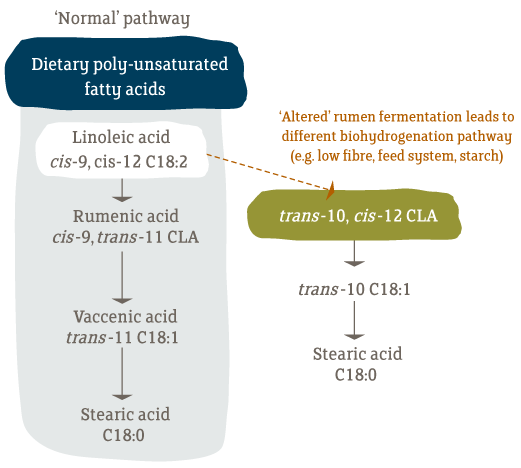Milk fat depression
Milk fat production is strongly influenced by nutrition and milk fat depression is a primary example of how diet can influence milk fat production. Diet-induced milk fat depression occurs when the diet contains rumen-active oils comprising unsaturated fatty acids (USFA) and where there is also an alteration in rumen fermentation which leads to an alteration in the biohydrogenation pathway (Figure 1).
 Figure 1 Altered biohydrogenation pathway leading to milk fat depression
Figure 1 Altered biohydrogenation pathway leading to milk fat depression
This is referred to as the ‘biohydrogenation theory’ of milk fat depression, as intermediates in the fatty acid biohydrogenation pathway pass out of the rumen where, on reaching the mammary gland, can decrease expression of lipogenic enzymes and subsequently milk fat production.
Lock and Bauman (2007) summarised the biohydrogenation theory, highlighting that the major fatty acid identified as being involved in milk fat depression is trans-10, cis-12 conjugated linoleic acid (CLA); data indicate that as little as 2 g/d of this isomer leaving the rumen can reduce milk fat production by 20%. Two other isomers also involved in reducing milk fat have also been identified ; trans-9, cis-11 CLA and cis-10, trans-12 CLA. The ‘normal’ and altered biohydrogenation pathways are presented in Figure 2.
 Figure 2 Biohydrogenation pathways under 'normal' and milk fat-depressing conditions
Figure 2 Biohydrogenation pathways under 'normal' and milk fat-depressing conditions
An altered rumen environment may develop due to, for example, use of high cereal/low fibre diets, or infrequent feeding of starchy ingredients which reduce rumen pH, while total rumen unsaturated fatty acid load is thought to influence development of milk fat depression via the biohydrogenation theory rather than simply presence of particular fatty acids.